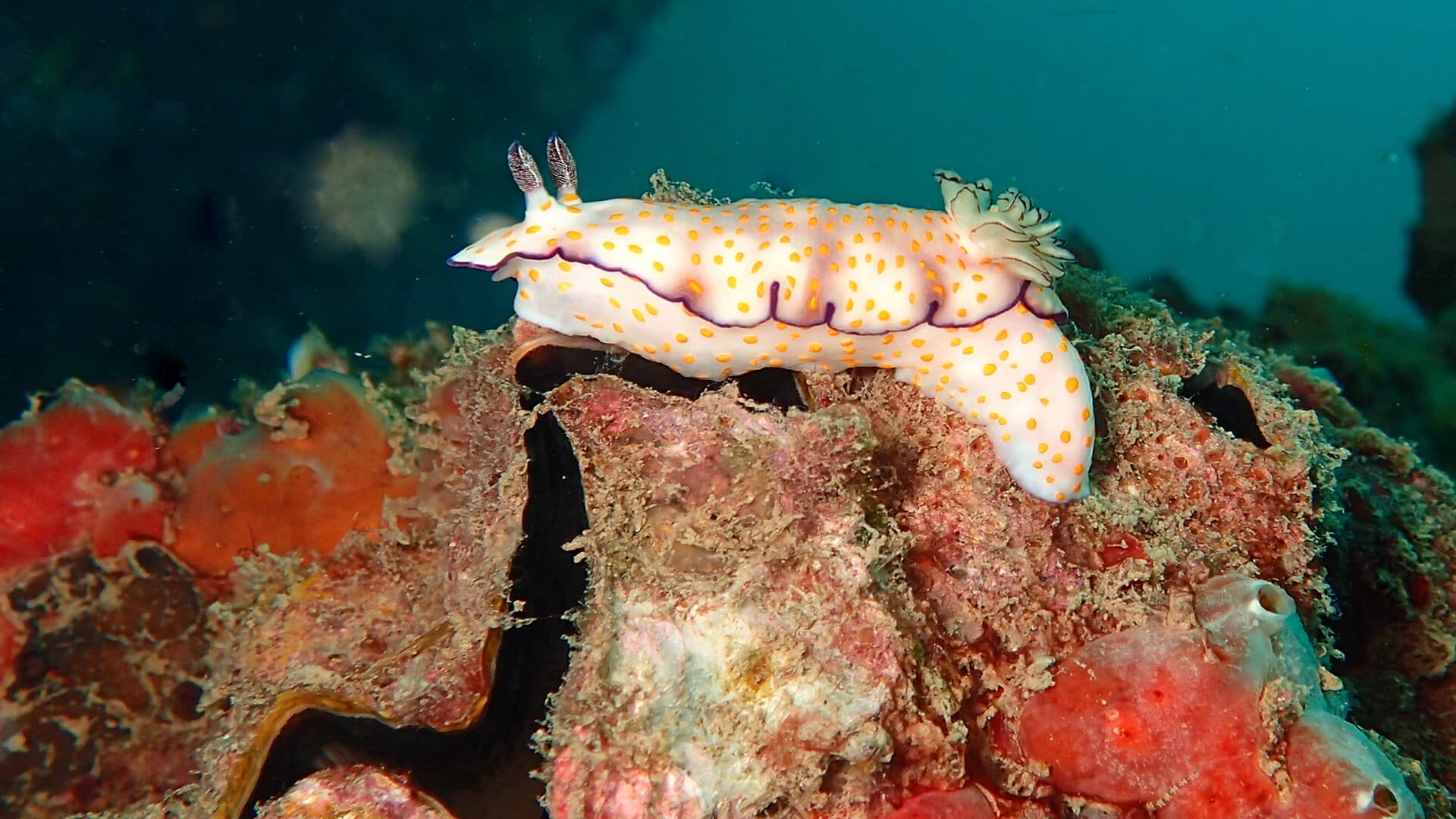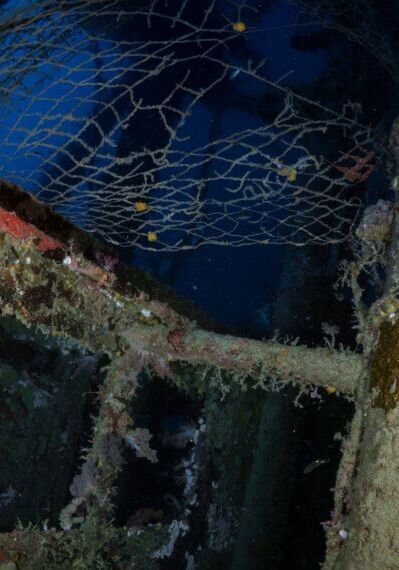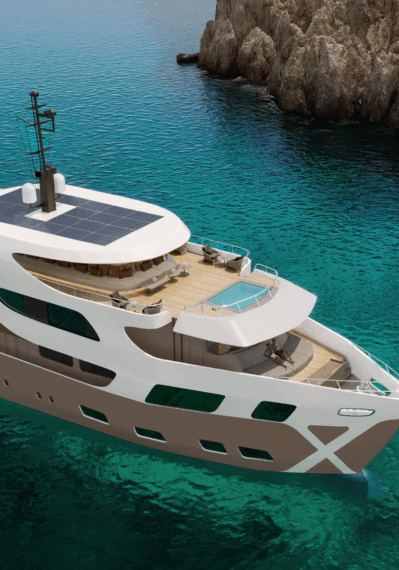
Wrecks have a special pull on divers.
They’re time capsules, artificial reefs, and adventure playgrounds all at once. Many of us plan entire trips around them. Some divers I know even spend their holidays hunting for unmarked wrecks, logging GPS coordinates like secret treasures on the chart plotter.
But more and more often, when we go back to those sites, we’re finding… nothing.
Just flattened metal, twisted beams, or in some cases, an empty patch of sand where a living reef once wrapped itself around a ship’s skeleton.
This is the reality of illegal salvaging of wrecks in the South China Sea – and it’s far more destructive than many people realise.
Wrecks Are More Than Metal
To non-divers, a wreck might sound like scrap. To us divers, it’s a living structure.
Over time, a sunken hull becomes:
- Shelter for fish, crustaceans, and invertebrates
- Hard substrate for corals and sponges to attach to
- Hunting grounds for pelagics and predators
- A full mini-ecosystem, often in places where the natural seabed is just sand or mud
Decades of slow coral growth and ecological succession turn “a wreck” into something much more: a thriving reef community with its own character and balance.
When that is destroyed, we don’t just lose a dive site. We erase an entire habitat.
Here’s the harsh part.
Illegal salvagers are not gently lifting relics or removing the occasional artefact. They’re there for tonnes of metal, as fast and cheaply as possible. And the methods they use are brutal.
Common tactics include:
- Bombing or blasting wrecks to break them apart
- Dredging or clawing with huge steel grabs that tear through the hull and everything growing on it
- Dragging chains and hooks that rip corals, beams, and deck structures apart in minutes
All those decades of coral growth? Gone in a single operation.
Entire sections of reef that took 30–50 years to establish can be smashed, overturned, or buried under debris and silt in a matter of hours.
“Illegal salvage of wrecks has no place in our oceans. What they do is destructive and devastates the local marine ecosystem.”
That’s not an exaggeration. It’s exactly what is happening, repeatedly, across the South China Sea and wider Southeast Asian region.
A Personal Example: The Disappearance of the 7 Skies Wreck
For many divers in our region, the 7 Skies wreck was a legendary site.
It offered:
- Deep, clear-water diving
- Majestic structure and swim-throughs
- Rich marine life growing over decades of submersion
Then one day, we returned… and it was essentially gone. The destruction happened right in front of eyes.
We documented our visit to the site:
What used to be a towering structure teeming with life had been reduced to a low, twisted mass of metal. A skeleton of a skeleton.
Seeing a wreck “before and after” like that hits hard. You don’t just feel sad for the loss of a favourite dive site—you feel the loss for the fish, the corals, and the countless tiny lives that had made that wreck their home.
Why Is It So Hard to Stop?
It’s easy to say, “There should be laws against this.”
In reality, laws are often not the main problem.
Here’s why it’s so difficult:
- Huge area, limited patrols
The South China Sea and surrounding waters are vast. No country has the resources to constantly patrol every wreck site. - Jurisdictional grey zones
Many wrecks lie in contested waters or far offshore, where enforcement is complicated and slow. - Limited manpower and priorities
Coast guards and navies have many responsibilities: smuggling, safety at sea, border control. Protecting wrecks – especially ones not formally recognised – often falls low on the list. - Reality on the ground
Even when regulations exist, what happens often depends more on the officers in charge than on the written law. Corruption, local “arrangements,” or simple indifference can mean illegal salvage continues with little consequence.
So yes, stricter restrictions or better protection on paper might help. But without serious, consistent enforcement at sea, wrecks remain vulnerable.
The Hidden Cost: It’s Not Just History We’re Losing
When a wreck is illegally salvaged, we lose multiple layers of value at once:
- Ecological value – a rich artificial reef, often in otherwise barren areas
- Cultural and historical value – many wrecks are wartime graves or important heritage sites
- Economic value – popular wrecks attract divers, which support local operators, hotels, and communities
All that is traded for a one-off payout from scrap metal.
It’s a short-term extraction that destroys a long-term, renewable source of value.
So What Can We Do as Divers?
We’re not coast guard, navy, or government. But we’re also not powerless.
Here’s what we can do:
- Visit wrecks – responsibly
The more a wreck is recognised as a valuable dive site, the harder it becomes (politically and socially) to destroy it for scrap. Tourism isn’t a perfect shield, but apathy is worse. - Document what you see
Photos, videos, and logs matter. When a wreck suddenly disappears or is damaged, having “before” proof helps NGOs, journalists, and authorities raise the alarm. - Support operators that care
Choose dive boats and shops that respect wrecks, brief divers properly, and engage with conservation issues rather than turning a blind eye. - Report suspicious activity
If you see barges with claws or unusual industrial activity around known wrecks, notify local authorities or reputable marine NGOs. Many cases only surfaced because divers spoke up. - Dive with minimal impact
Good buoyancy, no grabbing, no “souvenir hunting.” We can’t criticise salvagers for destruction if we casually break corals or strip artefacts ourselves.
My Advice: Dive Wrecks While You Still Can
I don’t say this to be dramatic, but to be honest:
Some of the wrecks you can dive today may not exist in 5–10 years if illegal salvaging continues at its current pace.
So my advice is simple:
Experience wreck diving as much as possible and absorb every moment it offers you.
Understand that:
- Visibility might be bad.
- Currents might be strong.
- The descent down the line might feel eerie or intimidating.
But when you arrive at the deck and see the structure fade into the blue, covered in soft corals, crinoids, schooling fish, and swirling life—there’s nothing quite like it.
I will always remember that some of my best dives were at a wreck.
And I’d like future generations of divers to be able to say the same, rather than reading about those sites in old logbooks and YouTube videos of “what used to be there.”
Illegal salvage has no place in our oceans.
Wrecks deserve better. And so do the reefs – and divers – that depend on them.
Related Articles
-

The Vanishing Wrecks of the South China Sea
Wrecks have a special pull on divers. They’re time capsules, artificial reefs,…
-

MV DiveRACE Class X
INTRODUCTION We are excited to present our latest liveaboard project – MV…
-

Thank You Class E.
Dear Friends, We want to express our heartfelt thanks to everyone for…
